Los Machucambos - Pepito
We leave Bali on a local bus, from the Mengwi bus station to Banyuwangi, on the East tip of Java. A hot and humid 4-hour ride until we cross the narrow waters between Bali and Java on a slow ferry. We arrive at Pepito’s Guest House, a cozy and cheap place in the city with a warm owner, Pepito; he quickly clarifies that the real boss is his wife (I, of course, avidly concur).
Banyuwangi is a small city with few things to see, but it is the prime location for a night stop over before hiking the amazing Kawah Ijen, one of Indonesia’s most active volcano, topped with the world’s largest highly acidic lake. Before we get there, though, we spend time roaming through the city. We had almost forgotten that Indonesia is largely Muslim (85% of the population). We walk through the small streets as the Muezzin sings the Adhan, 5-times daily call to worship. The locals are all nice and respectful, but the stares are long and now directed at Madie rather than me. We’ll make sure to bring a scarf tomorrow. At night, we eat our first Martabak, a most delicious dish, like a fried pancake filled with duck eggs, onions and your meat or vegetable of choice.
Pepito helps us plan our hike up Kawah Ijen to see the blue flames and sunrise; we will charter with Catherine, another guest of the house for a cheaper group price. For most places we’ve hiked so far, if they’d be located in the U.S., we would have signed three waivers, a blood pact and made five pinky promises. In South-East Asia, if you’re willing and able to walk, your security is your responsibility - so we read online (maybe too much) the numerous warnings for people with asthma, panic attacks or difficulty breathing. Kawah Ijen is an active volcano constantly spitting out sulfuric clouds - and sometimes, the wind is against you.
The journey starts with a foggy wake up at one in the morning and a bumpy hour jeep ride. We’re handed over extra jackets and gas masks (I get the pink one), and start hiking in the pitch black night - the chill immediately reaching our bones. Unfortunately, we did not ask for a “tall white guy” jacket, so I settle for my long sleeve and breaking a sweat on the way. It takes us a couple hours to reach the top; we walk carefully on a narrow rocky path down to the center of the crater, close to the source of the sulfur gas. The air stinks; the path is slippery and extremely steep. But the scenery is all the more breathtaking. The blue flashes we could see from the top become 3-meter tall fierce flames, created by immediate combustion of the sulfuric gasses meeting the oxygen-filled air; thankfully the wind is with us, pushing the menacing cloud away, so we get to come as close as the heat lets us. Some of the gases condense into liquid sulfur which continues to burn as it comes down the slope, creating a blue-like lava.
“C’est Dantesque,” our French hiking partner says. I can’t disagree and fall silent to the amazing power in front of us. It‘s hard not to awe stupidly, but the gas mask doesn’t let me. The wind brings a wave of acid cloud, immediately attacking violently my throats and lungs. You’d almost complain and whine, if it wasn’t for crossing paths with miners on their way back, with 75-100 kg of bright yellow sulfur on their shoulders, and no gas masks. For Rp 600-700 per trip, they reduce their life by a decade or two to feed their family. Close to the gas cloud, ceramic pipes help speed up the cooling process, effectively harvesting sulfur. Unlike in Bali, volcanoes are not holy - they're a source of income. We climb back up and spend the sunrise looking over the crater and the green acid lake. The scenery is right out of an old star trek episode. My throat feels like the day after a rough night with friends at Shotwell. Maybe I’m getting a little nostalgic.
We're back from the hike at 8am, exhausted and amazed; we leave only an hour later on a six-hour train to Surabaya. We stocked up on snacks - meanwhile, Ramadan started. A little girl keeps smiling and playing with me on the train. We pass by the famous Mt. Bromo, choosing not to stop after reading numerous disappointing experiences (including our friends Me & Frenchie). We’ll have time later in our life for an easy jeep ride amongst tourists up the volcano; Our heads are still filled with Kawah Ijen anyway. Instead, we rest for a few days in Surabaya, in a cheap room upgraded with the mosquito net, watching CSI and eating our first McDonald’s in a long time, gulping down longingly a large glass of Coke. Comfort food is a contextual thing.
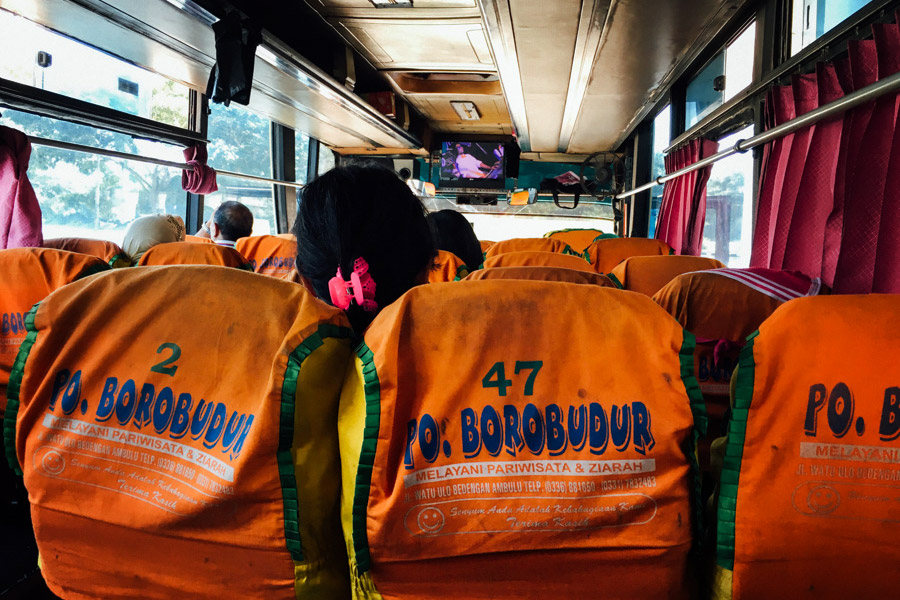
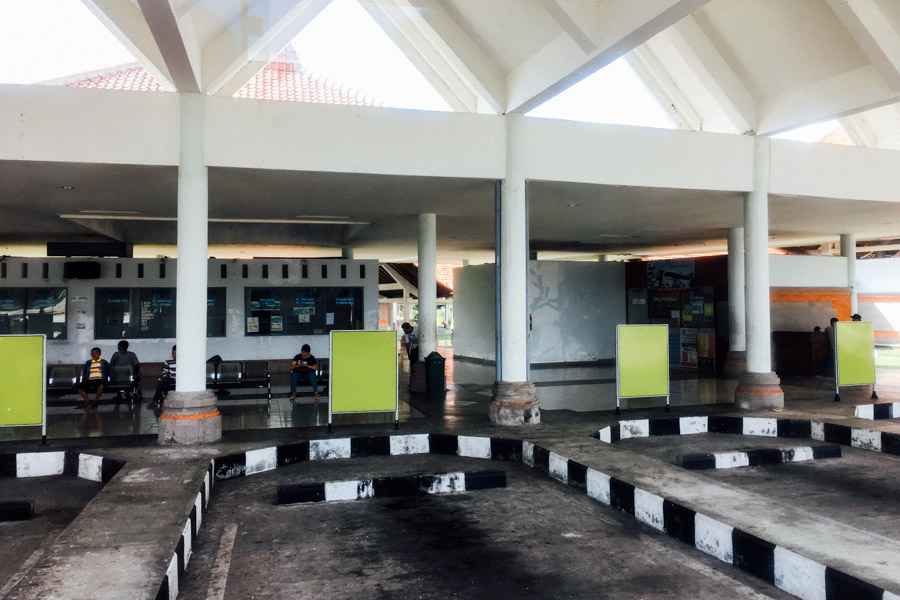
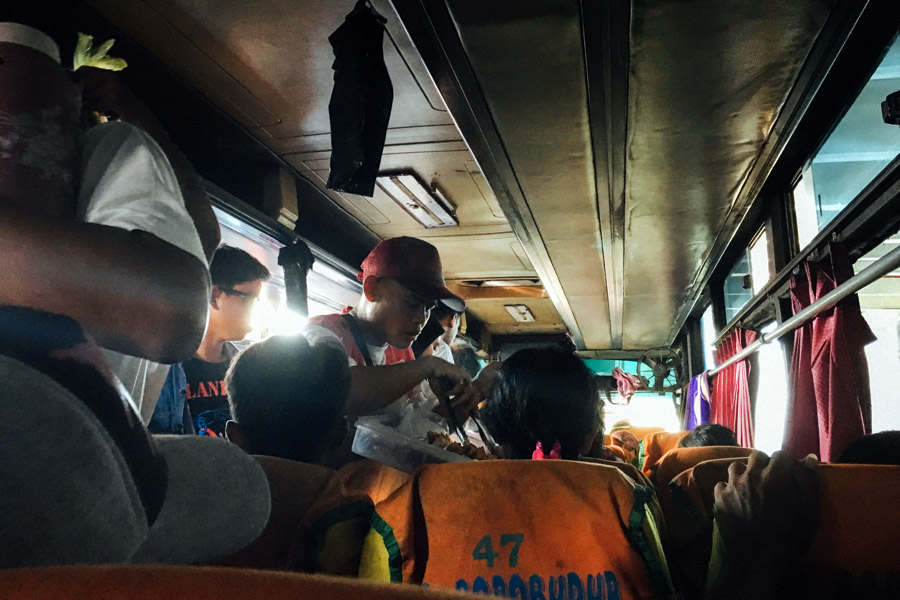

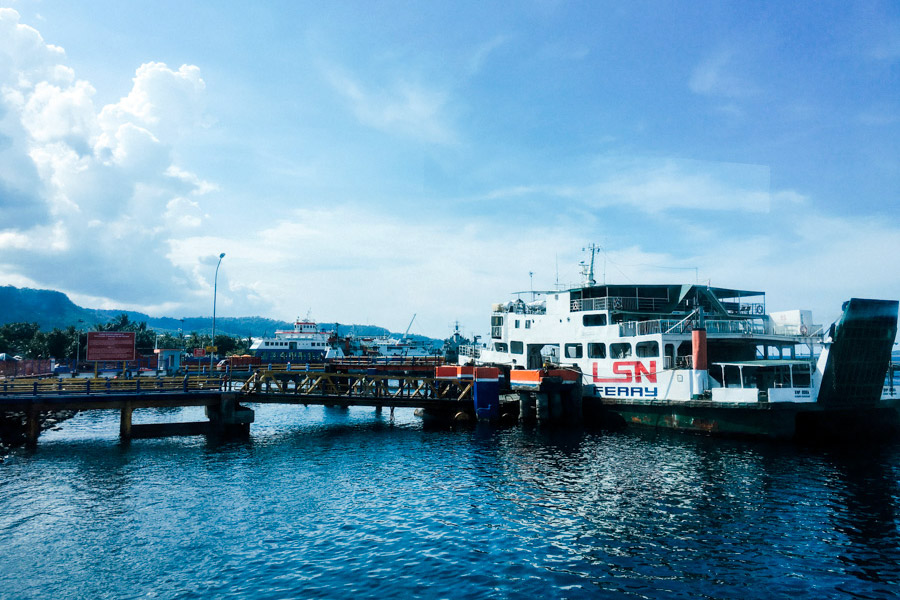
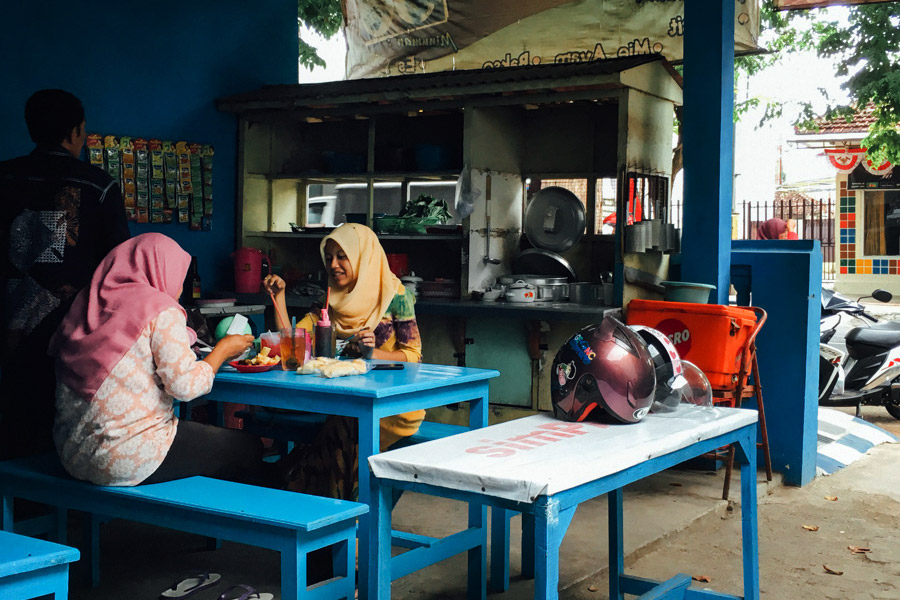

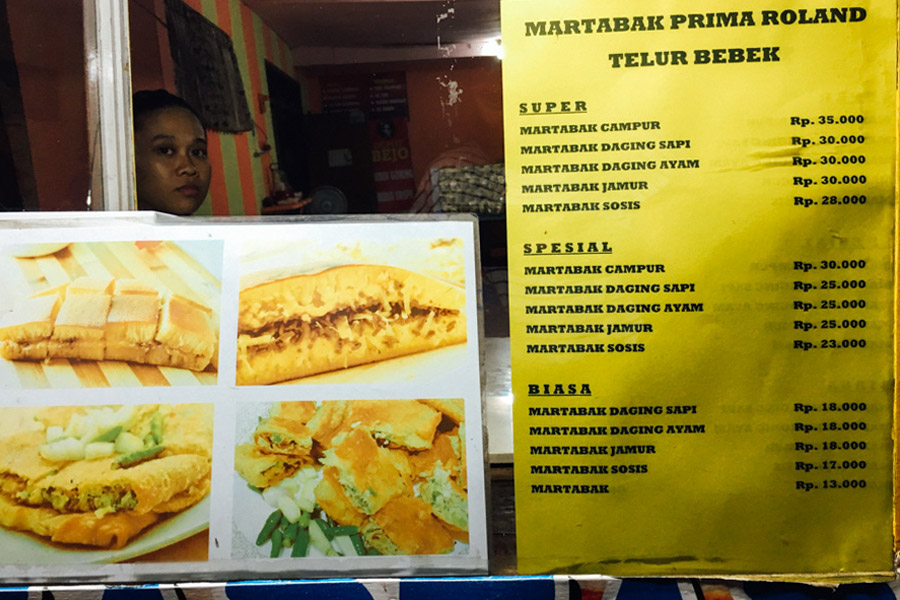
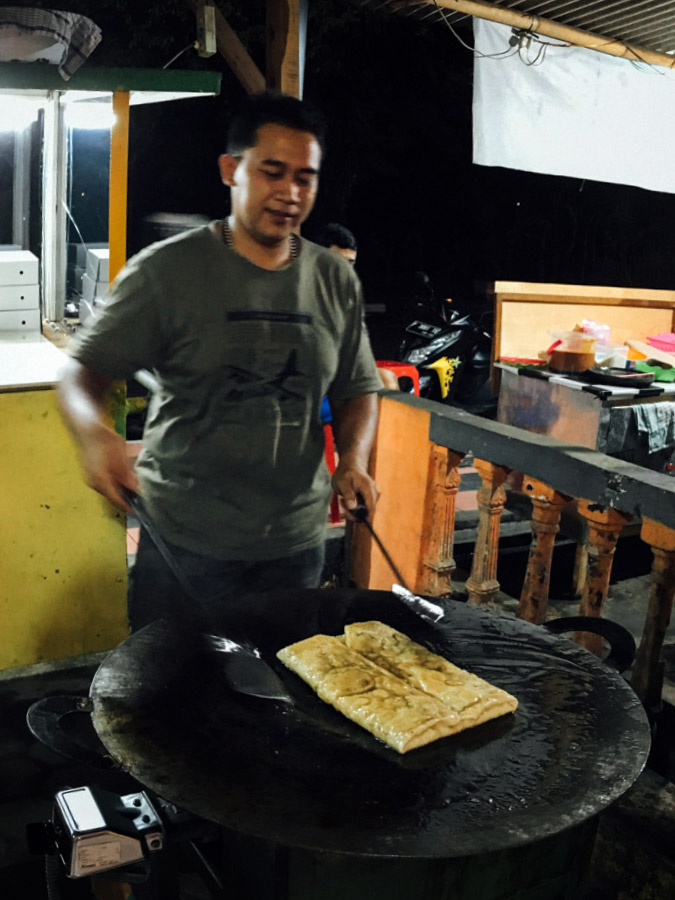
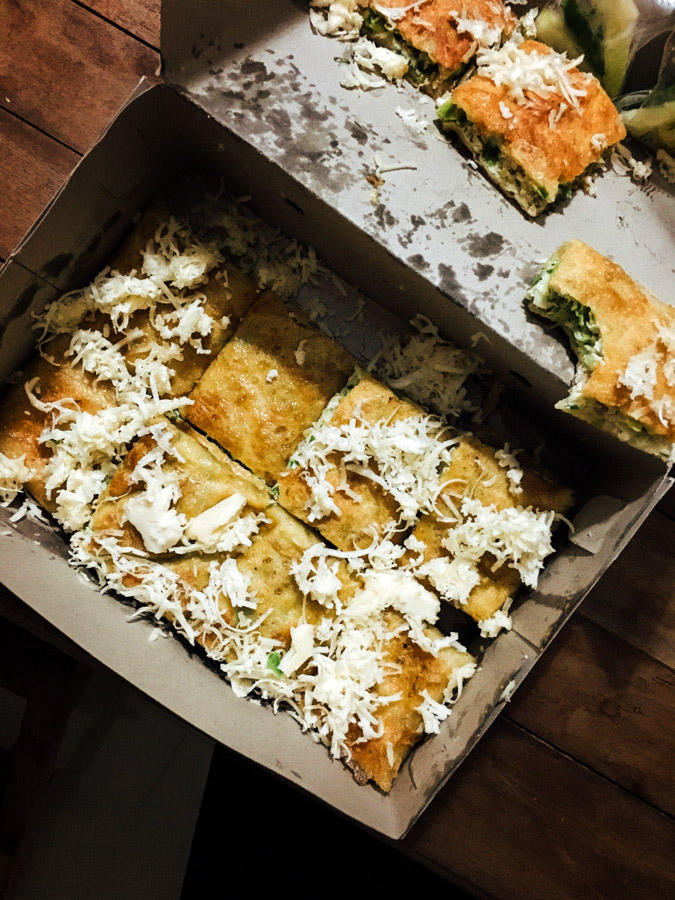
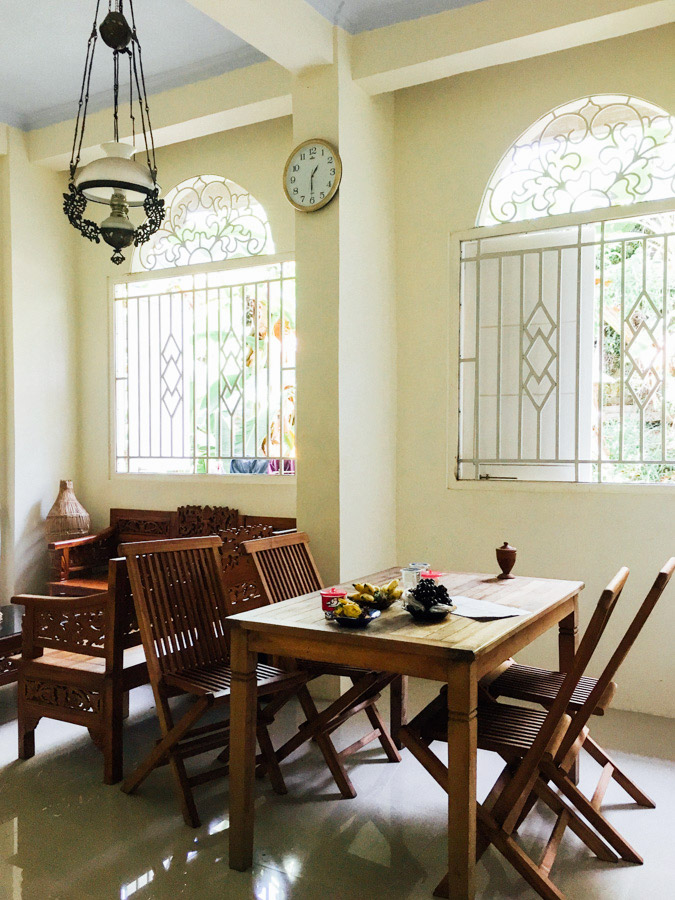
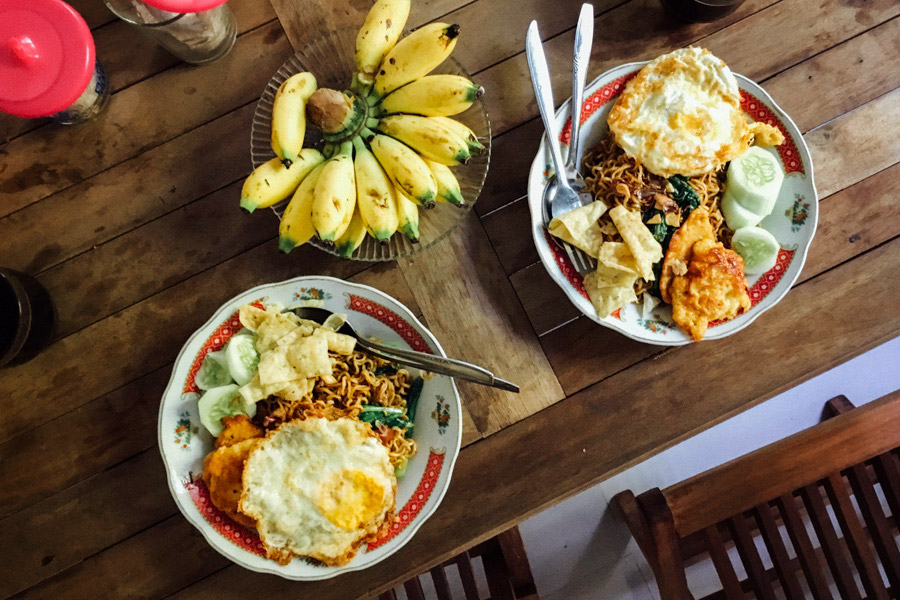
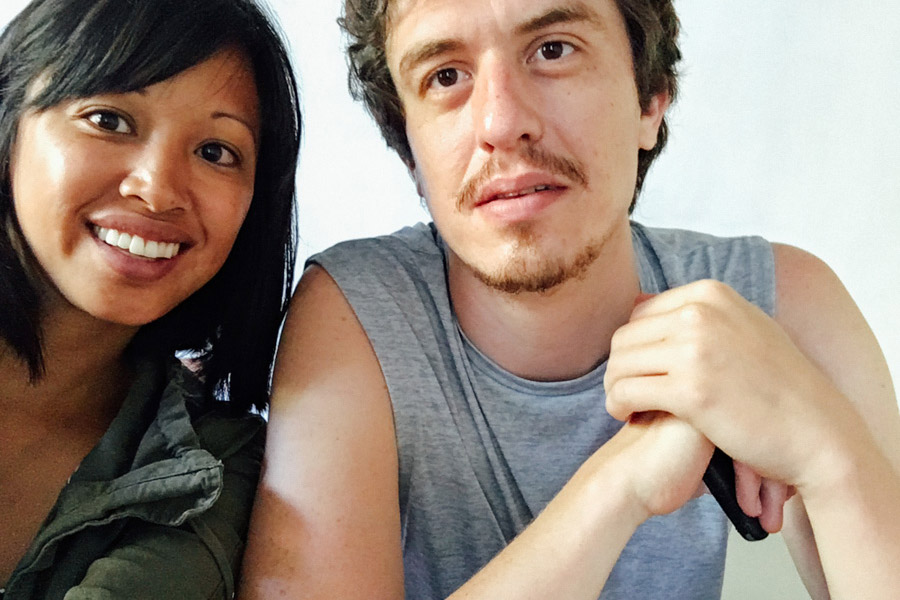

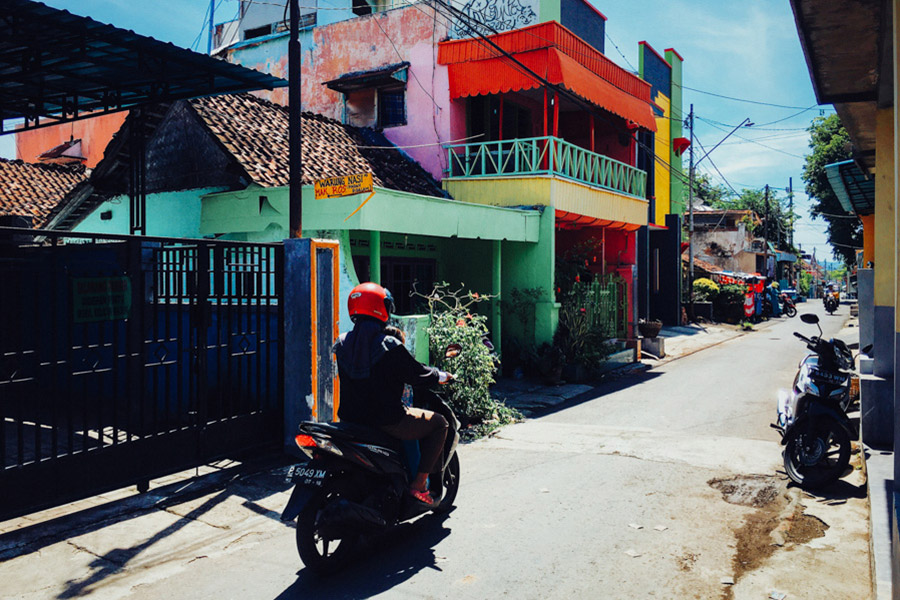
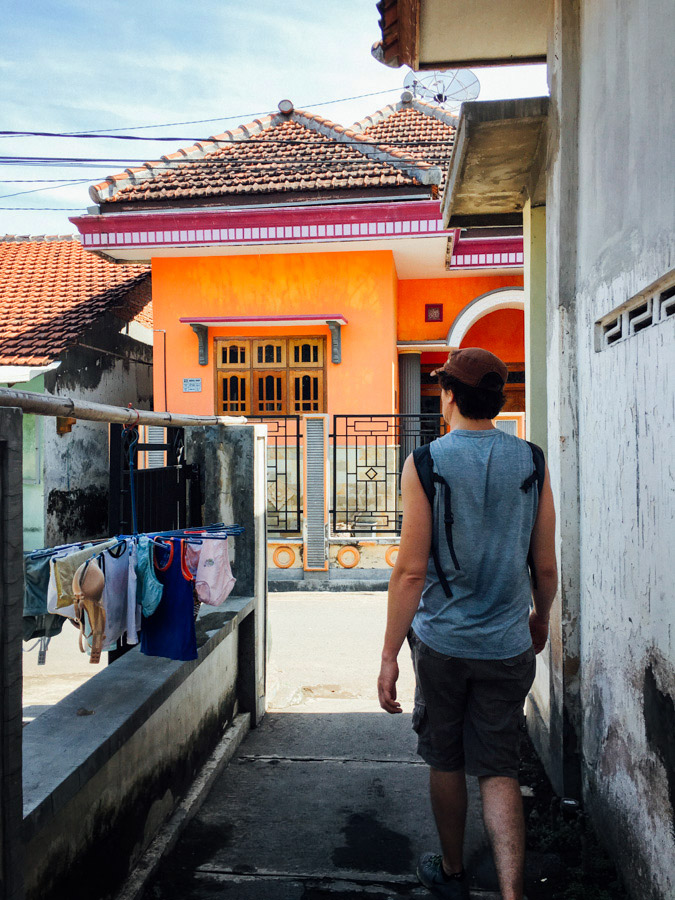
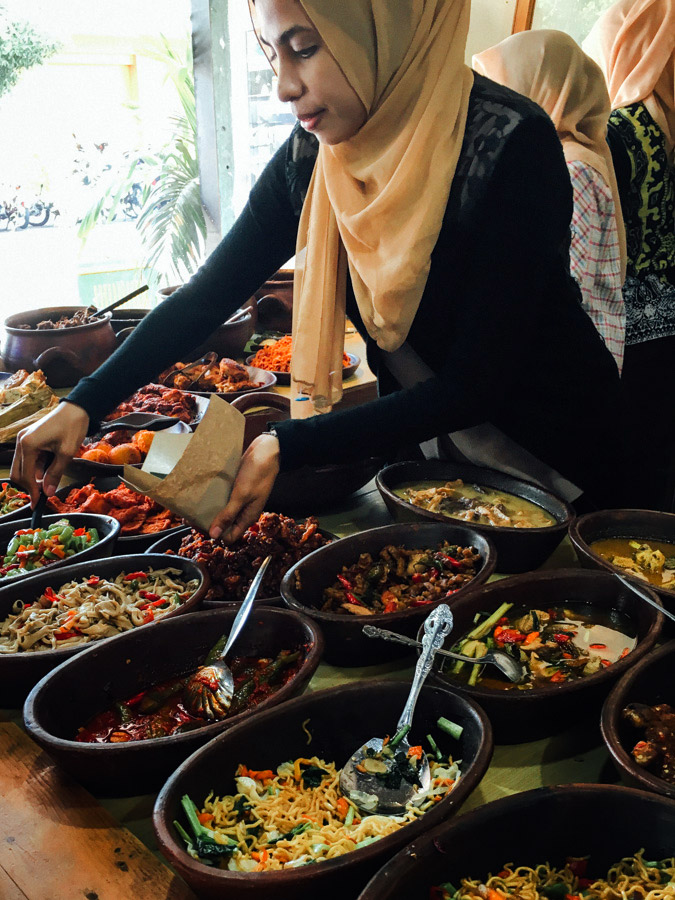

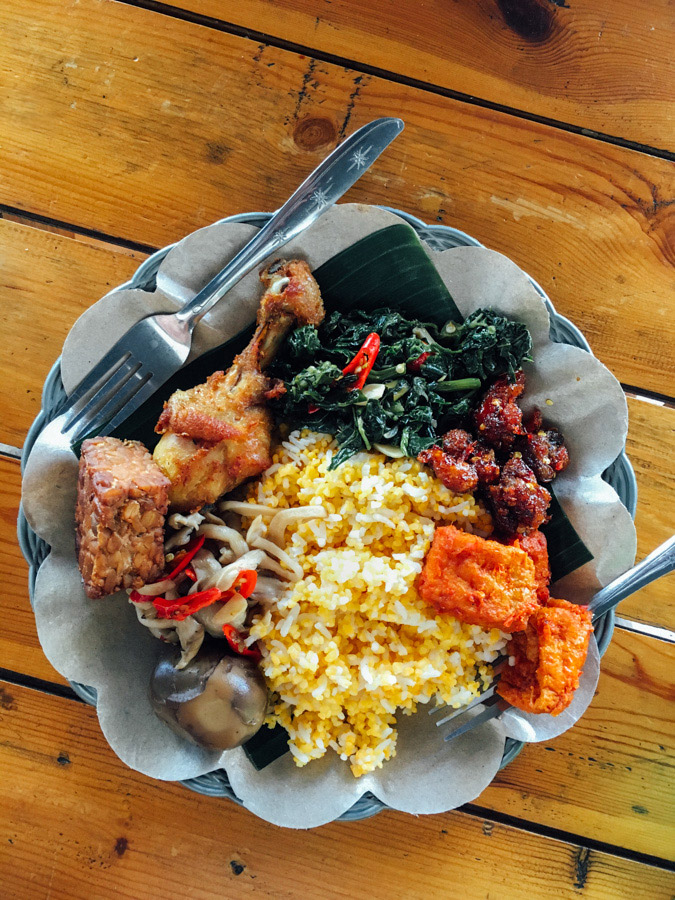
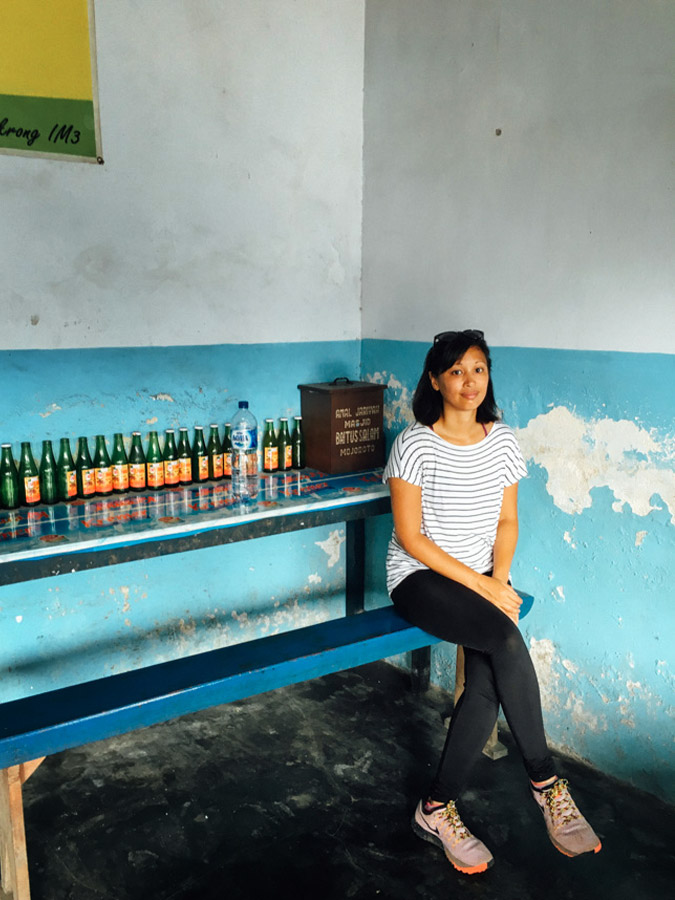

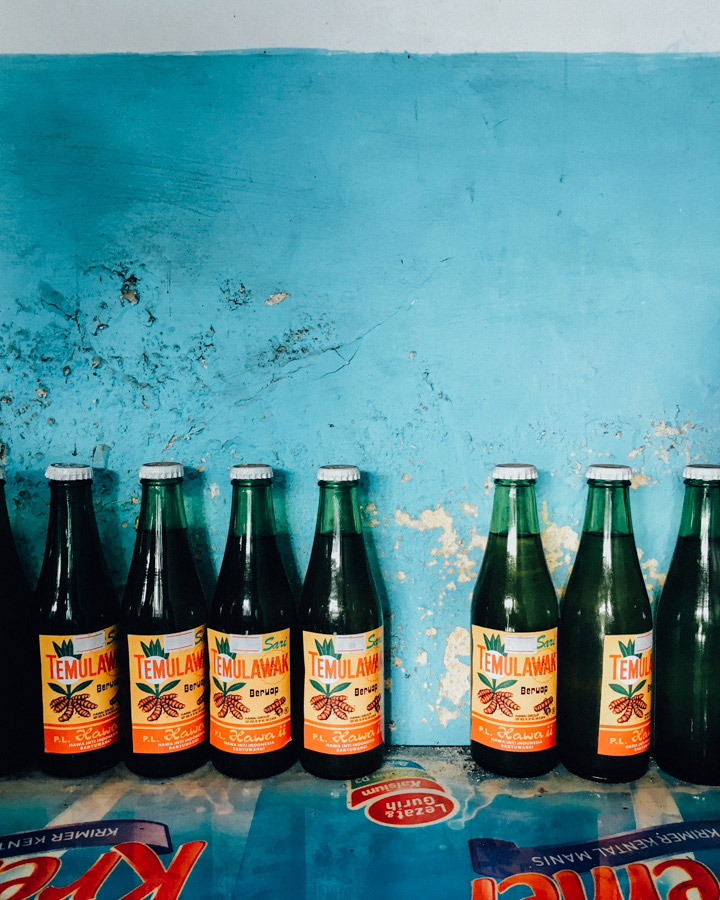
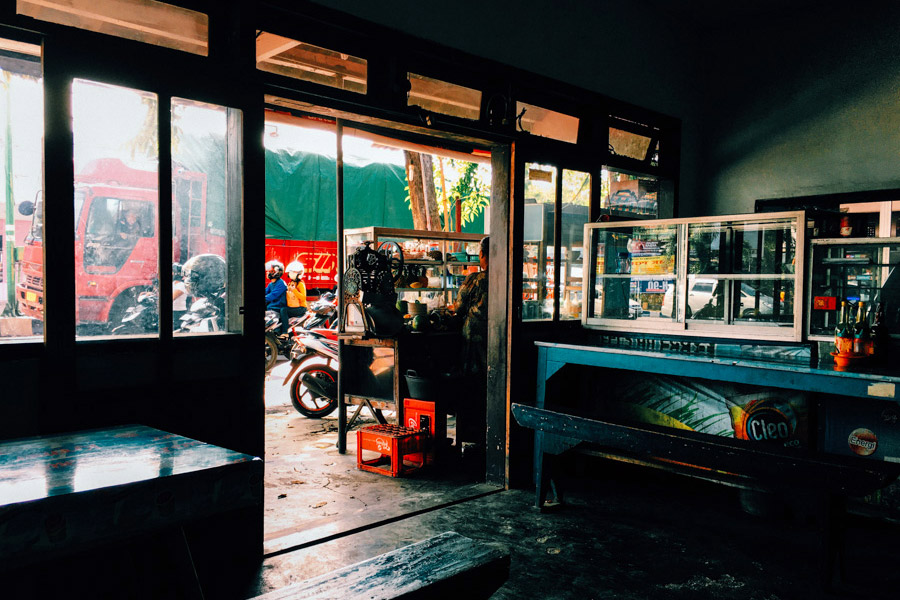
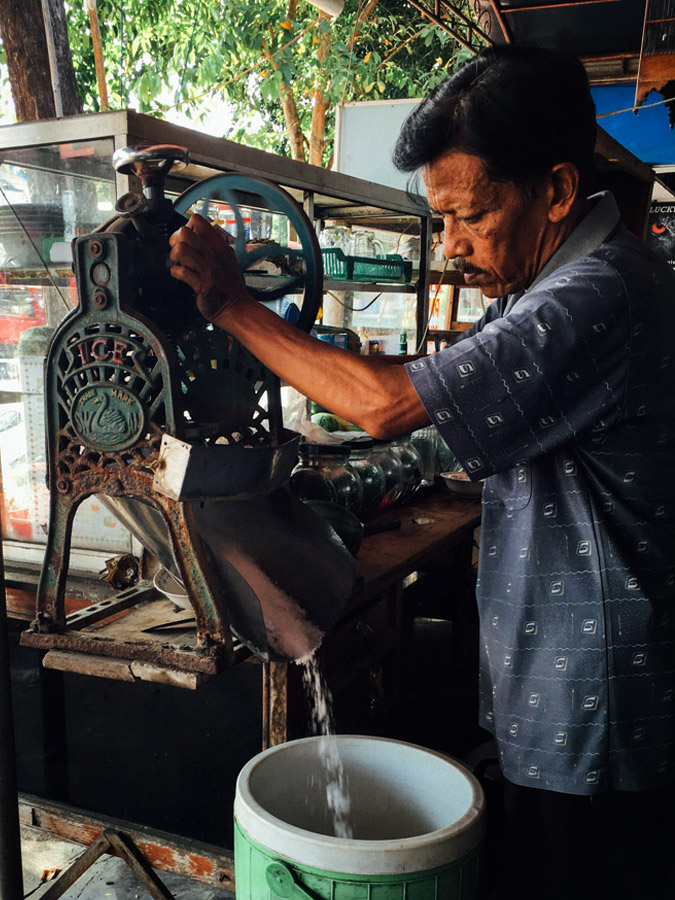
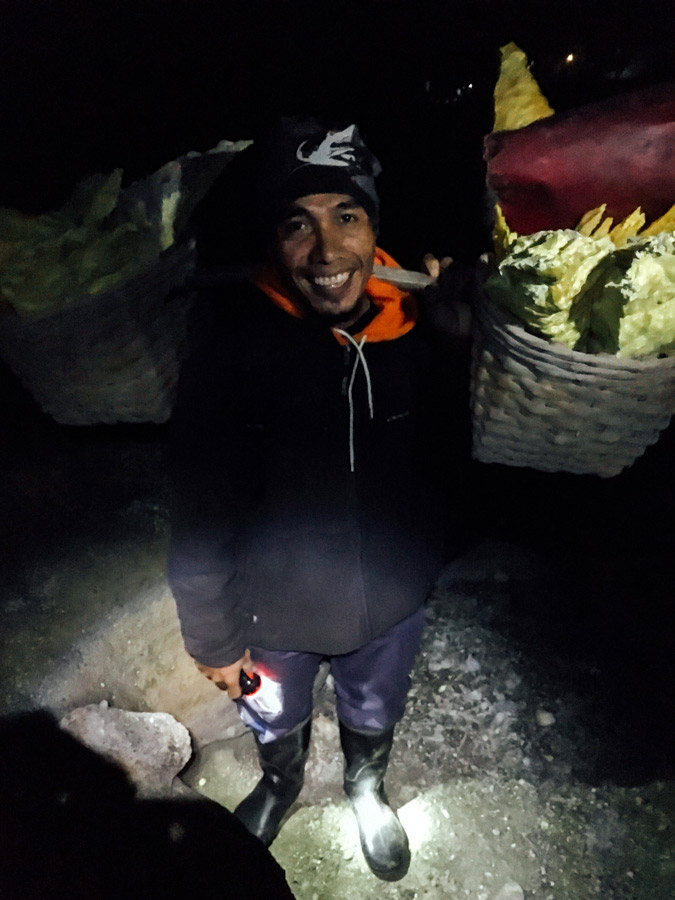

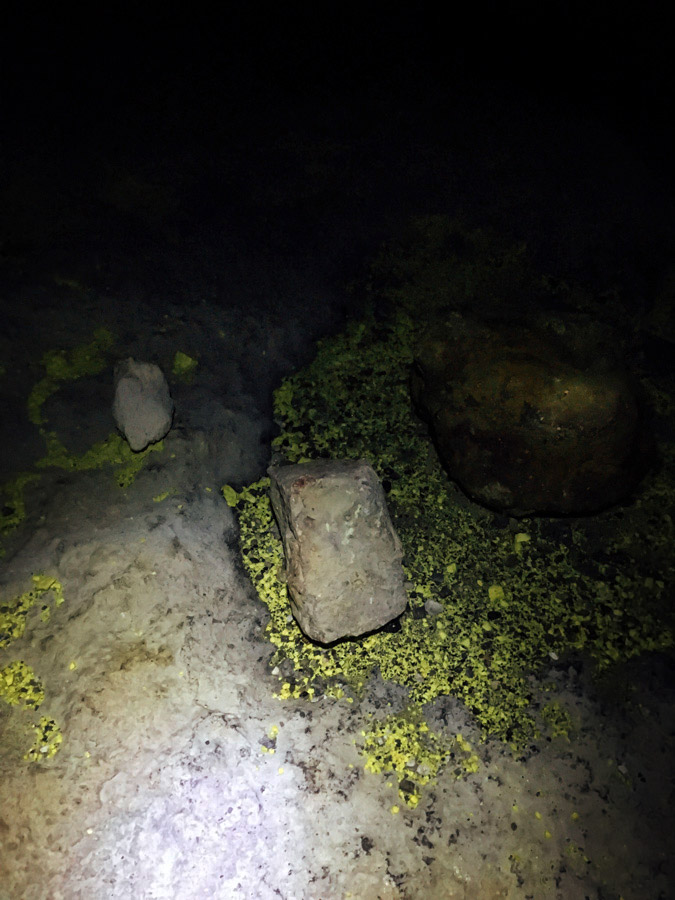

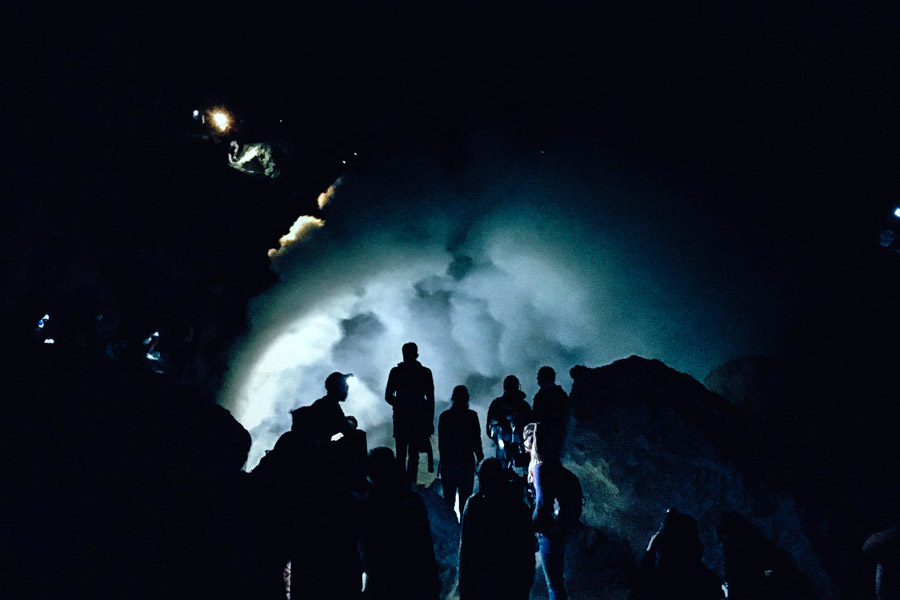
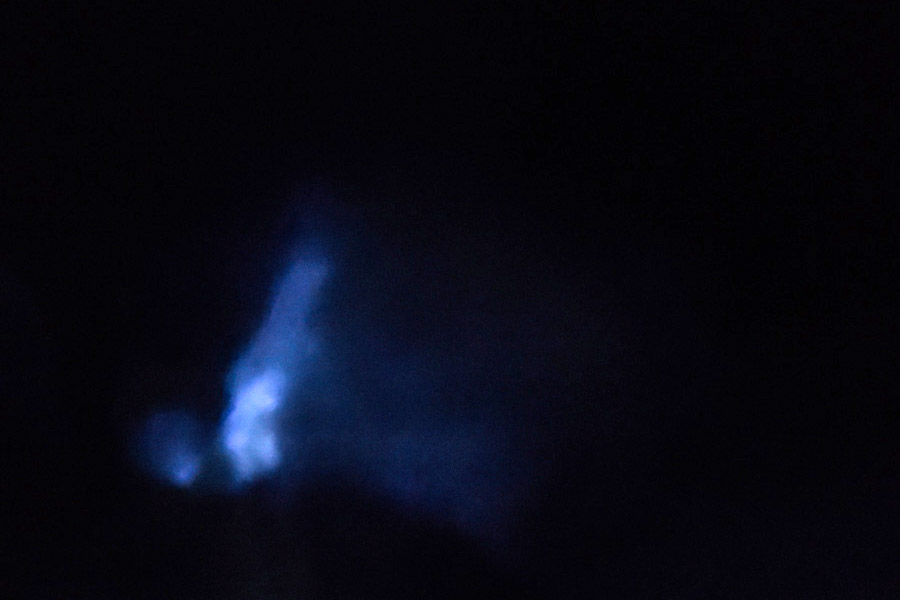
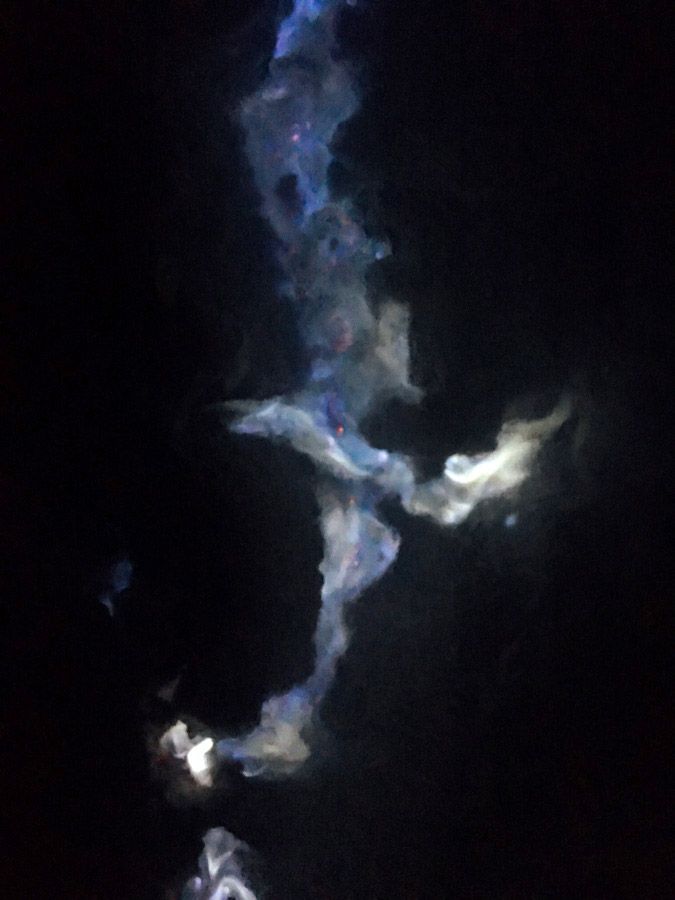

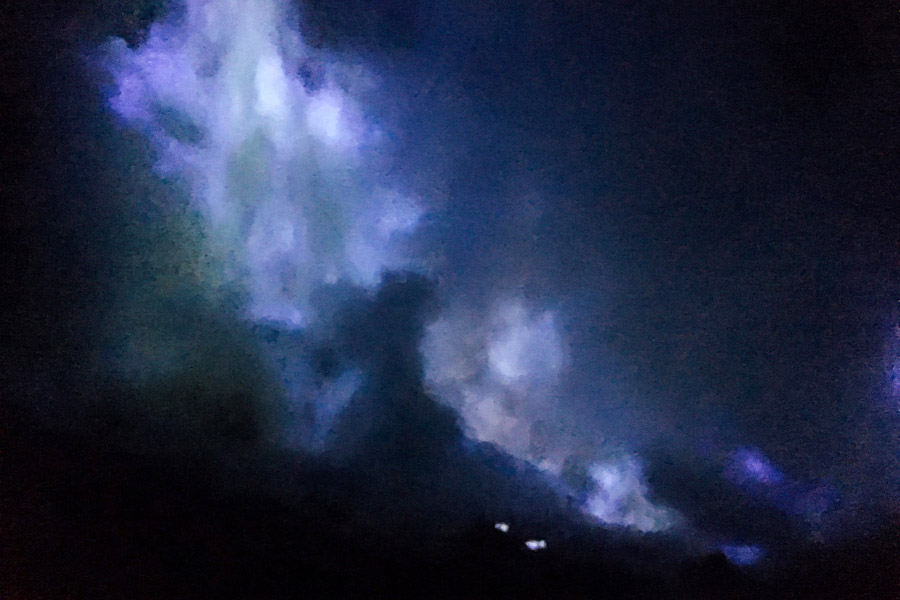
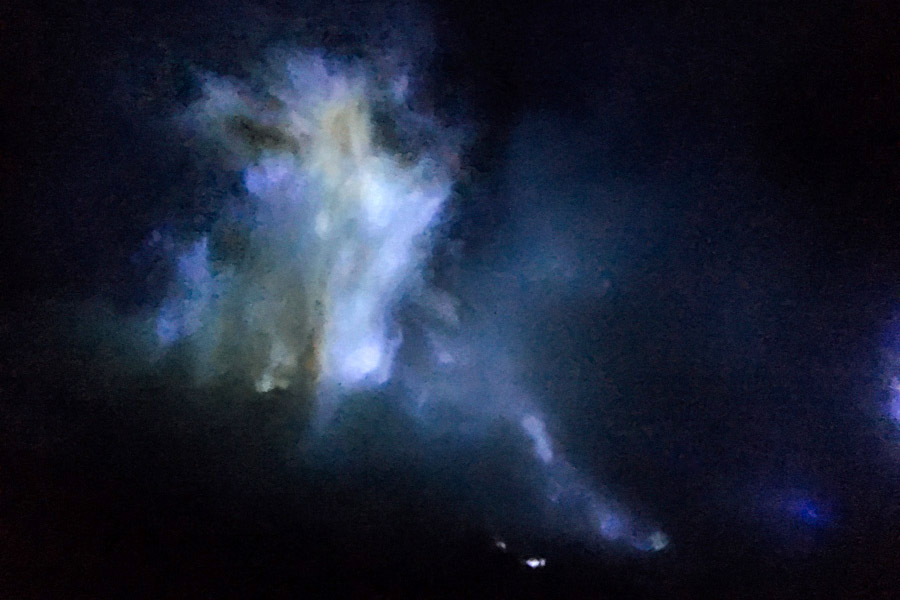



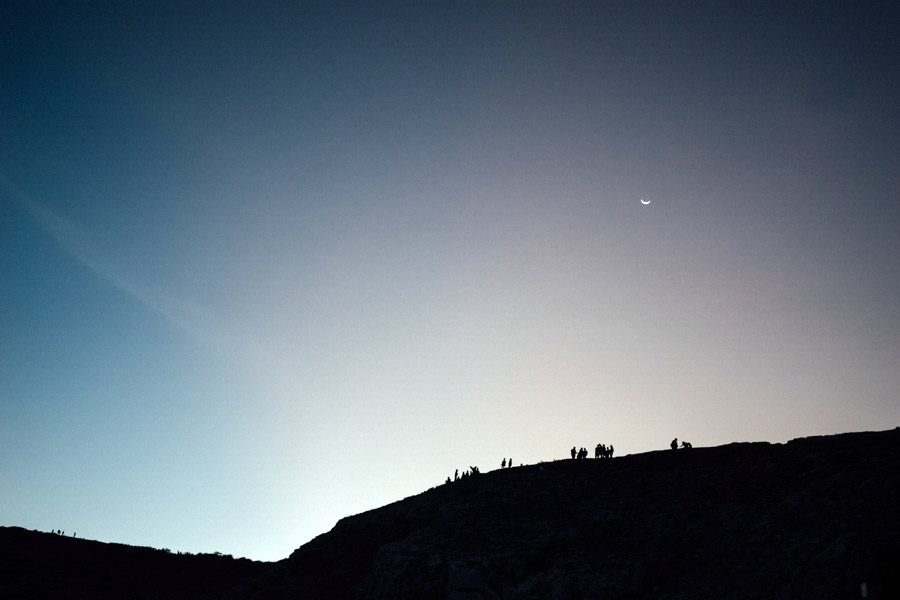
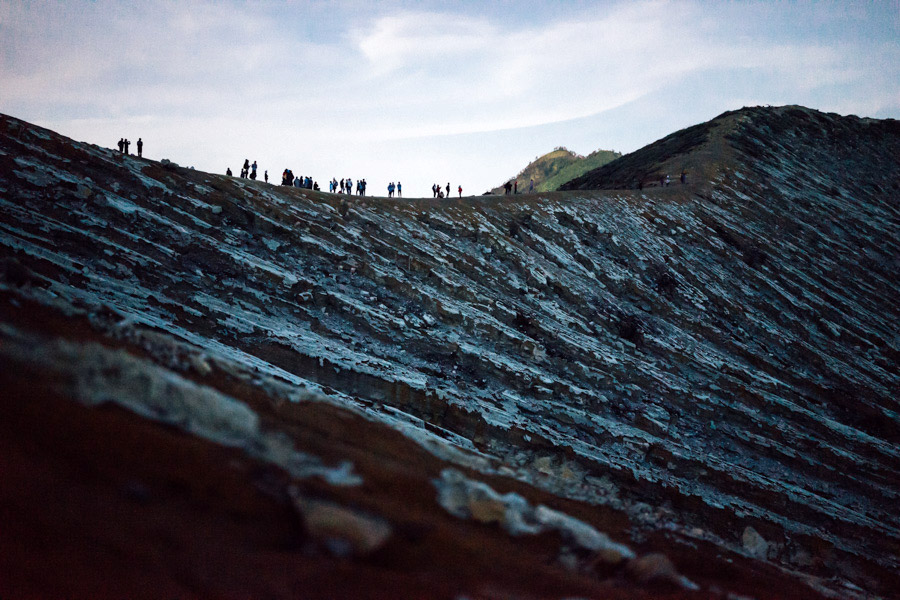
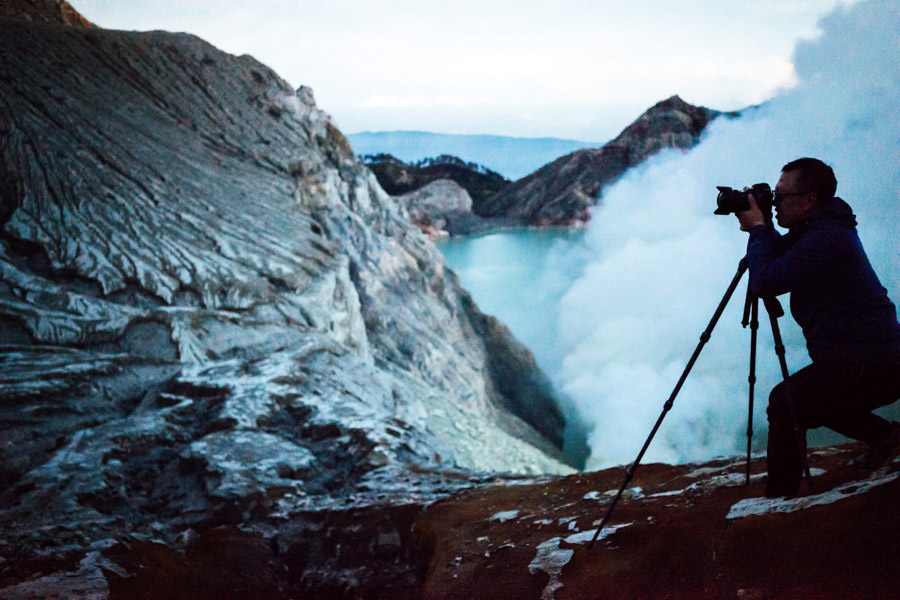
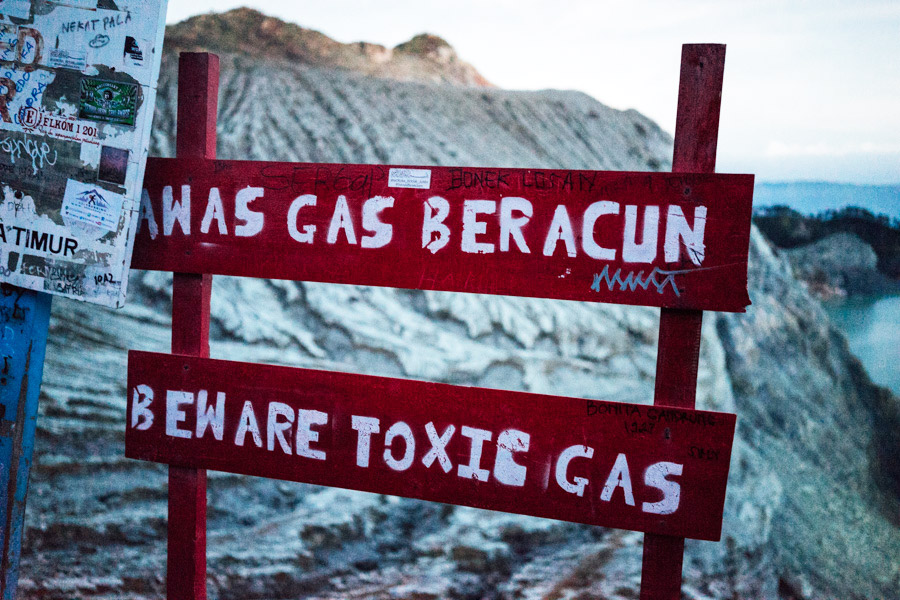
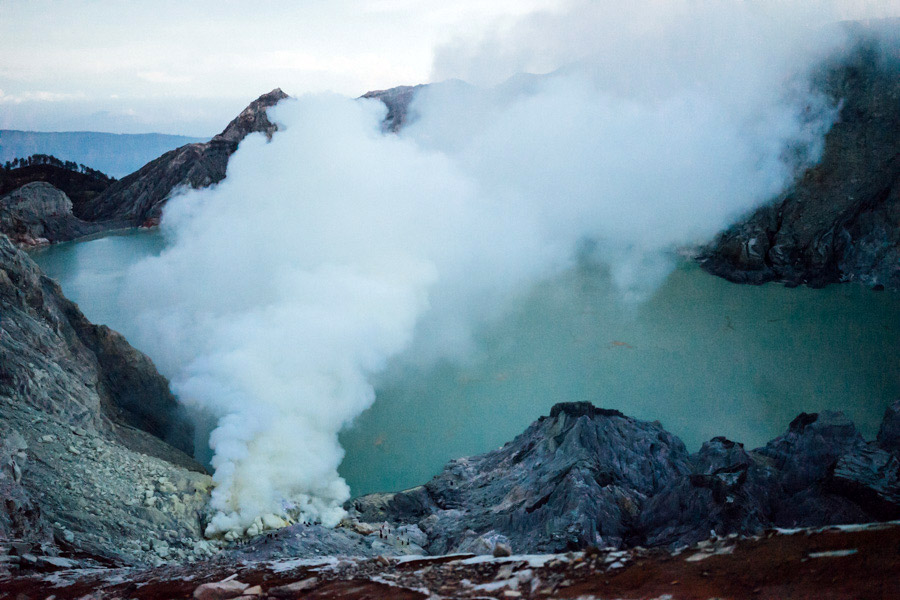
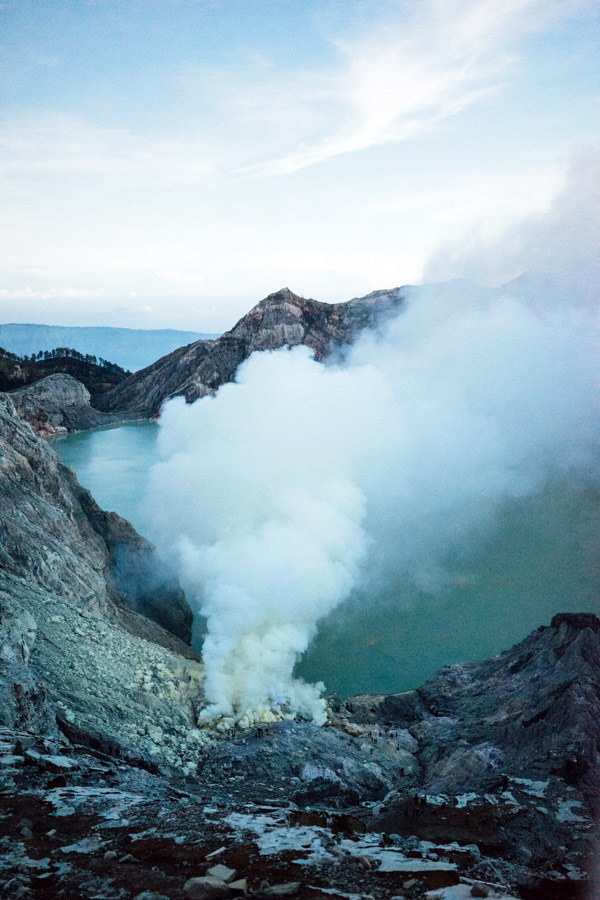
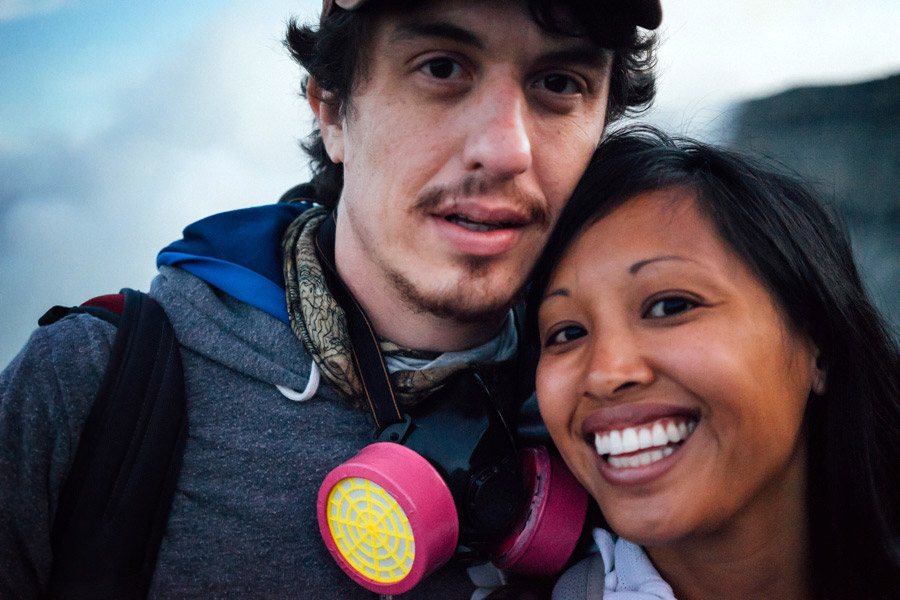
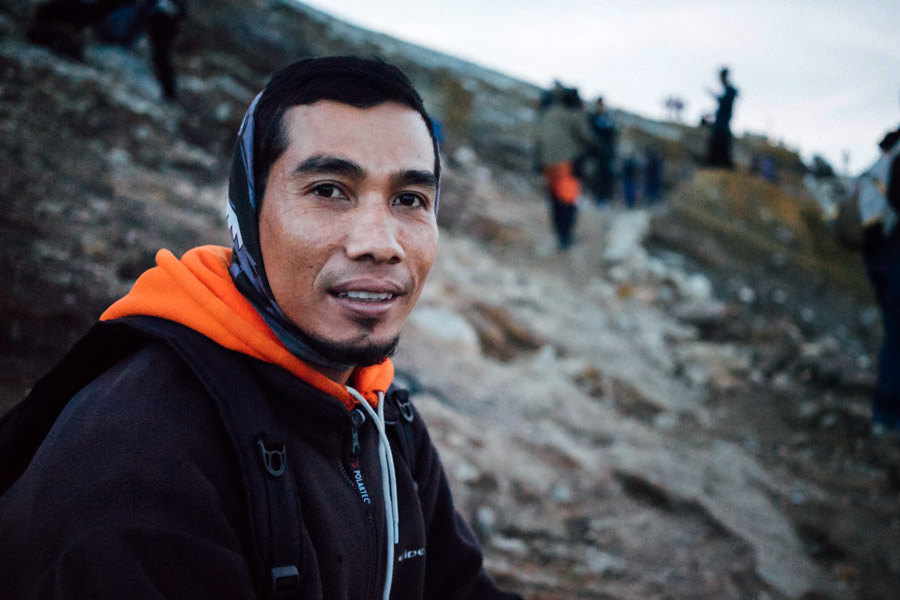
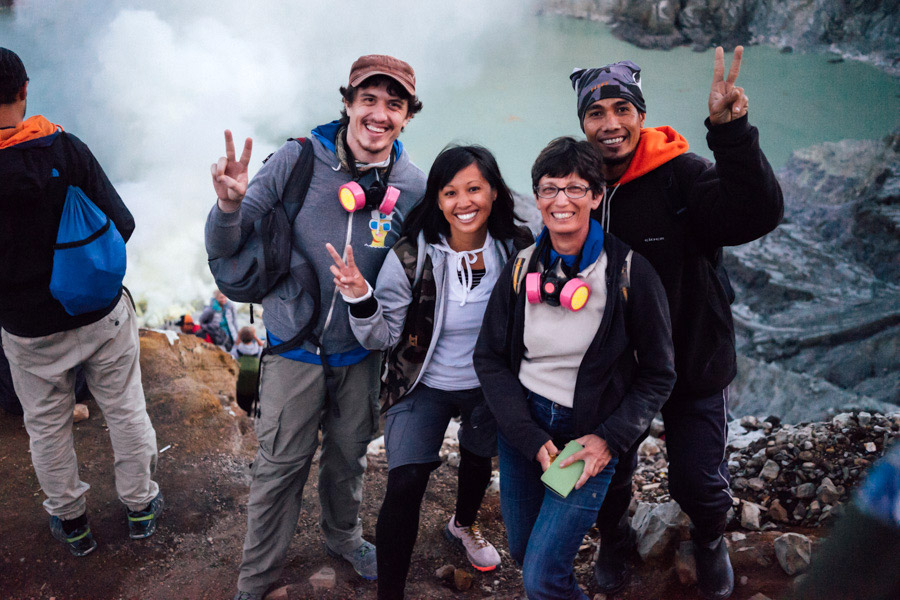

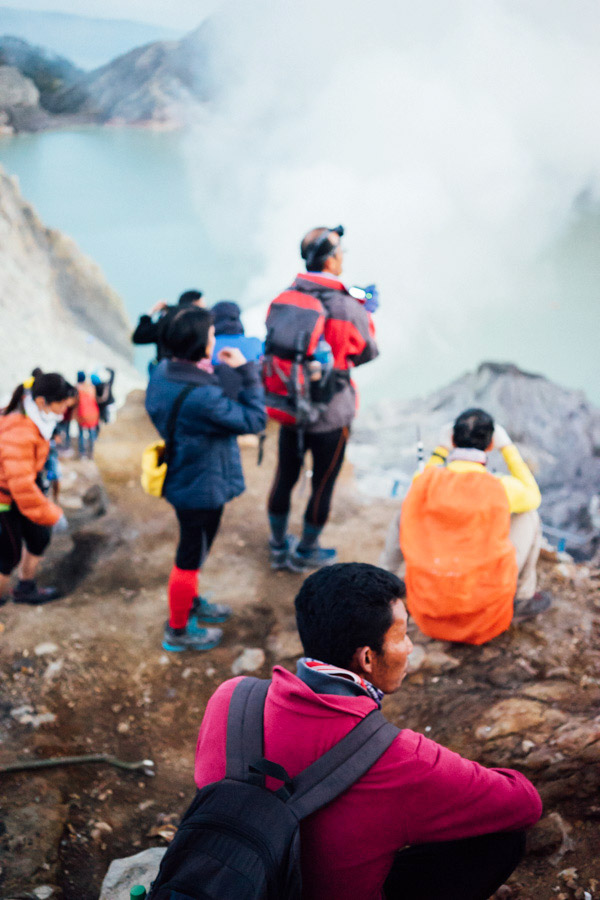
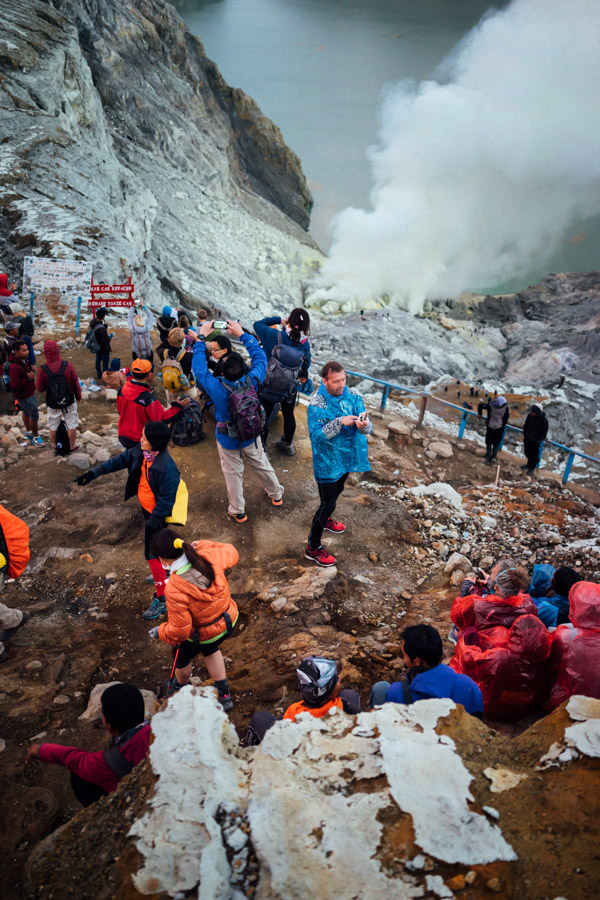
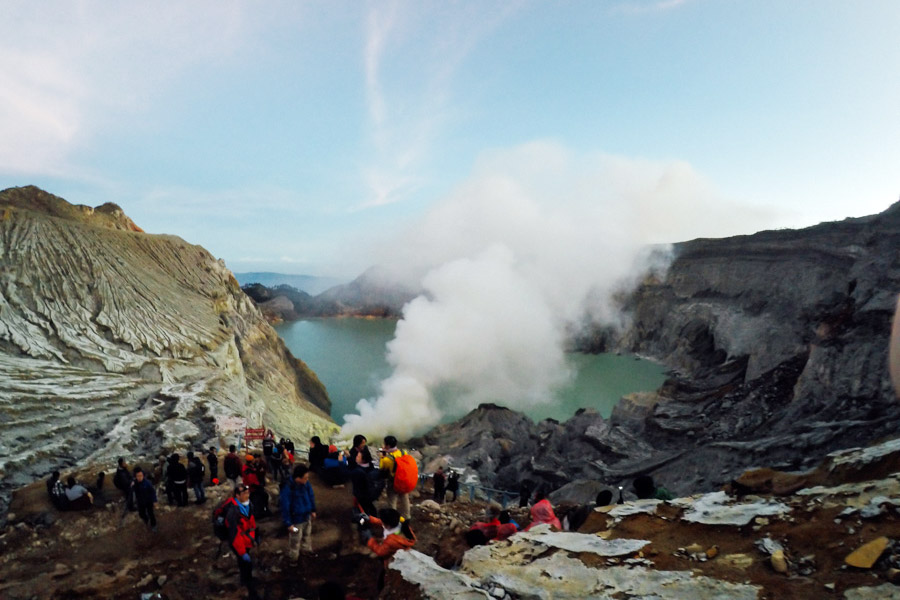
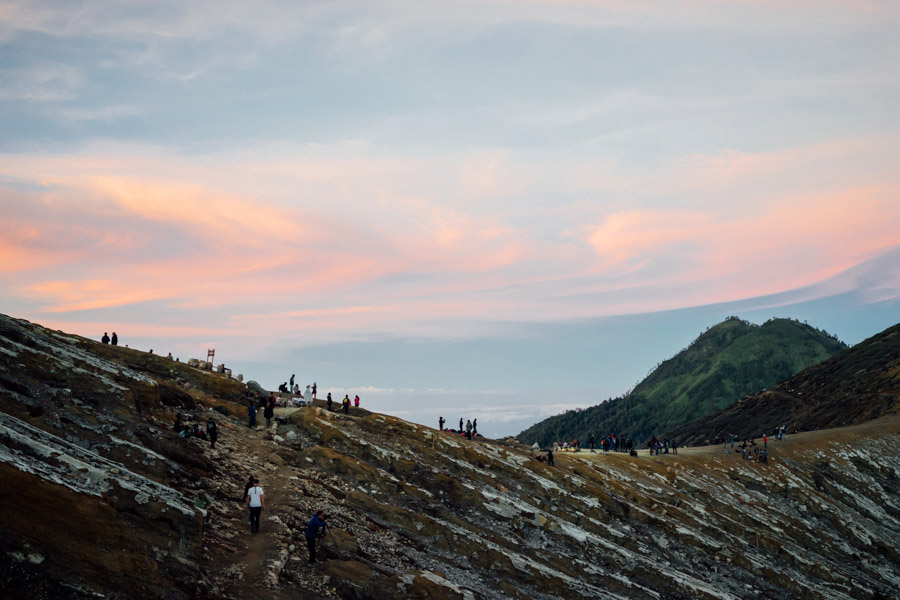
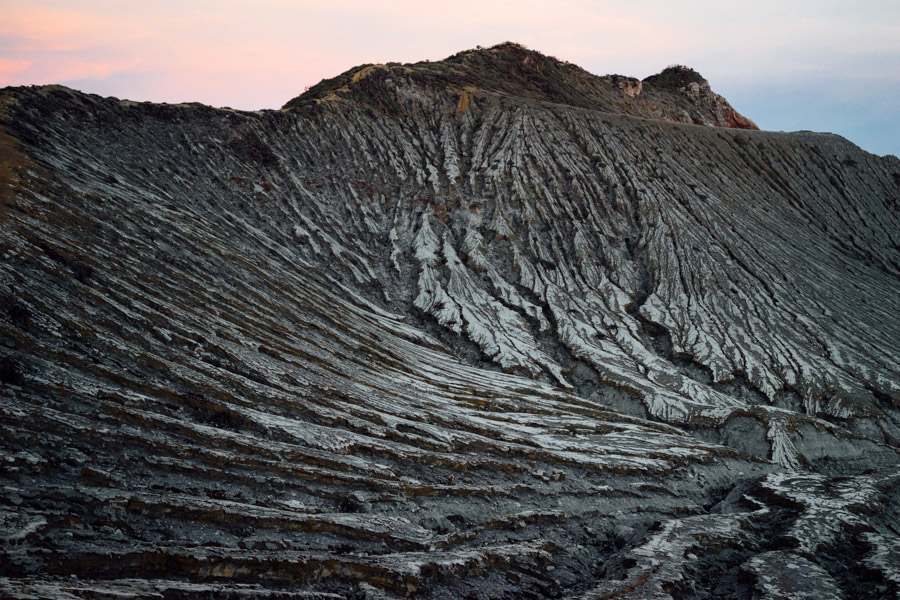
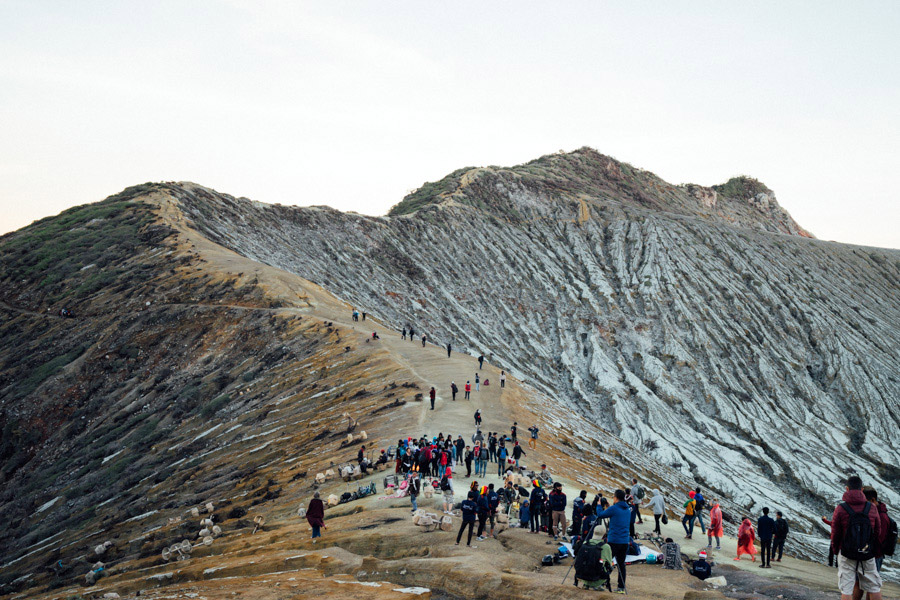
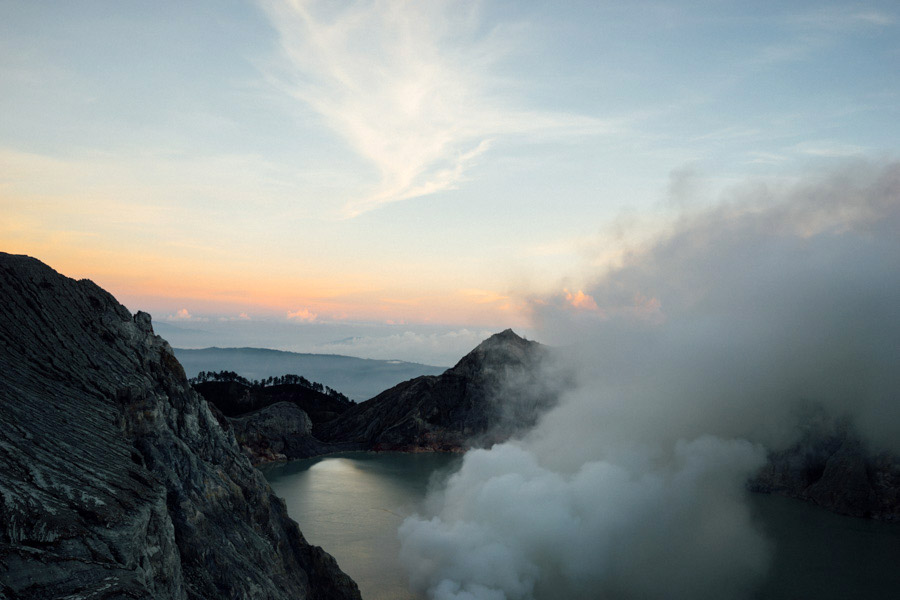
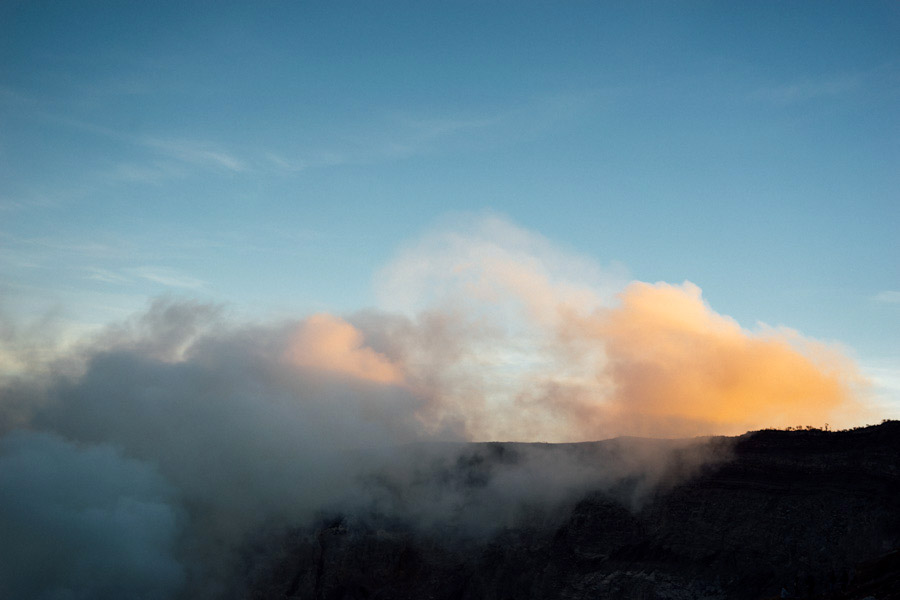
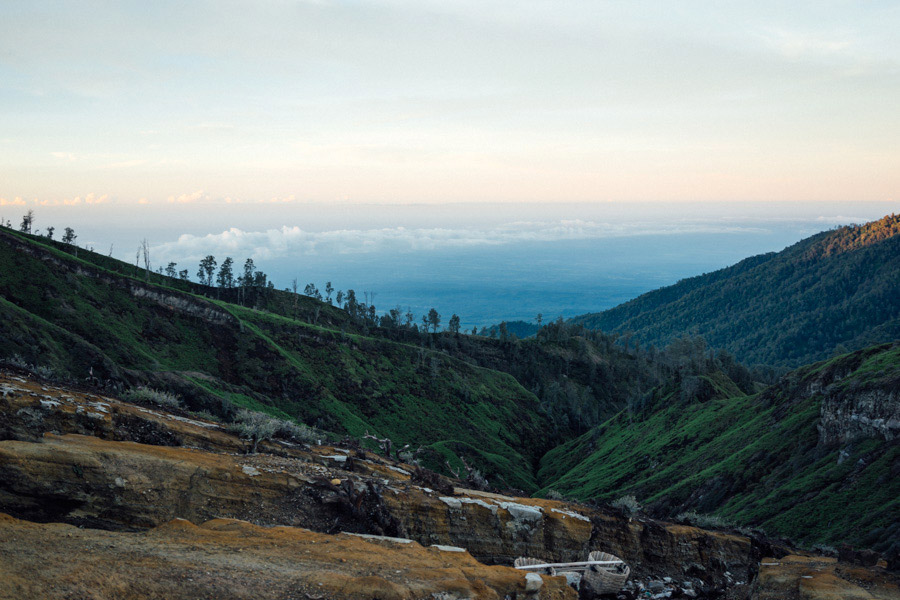

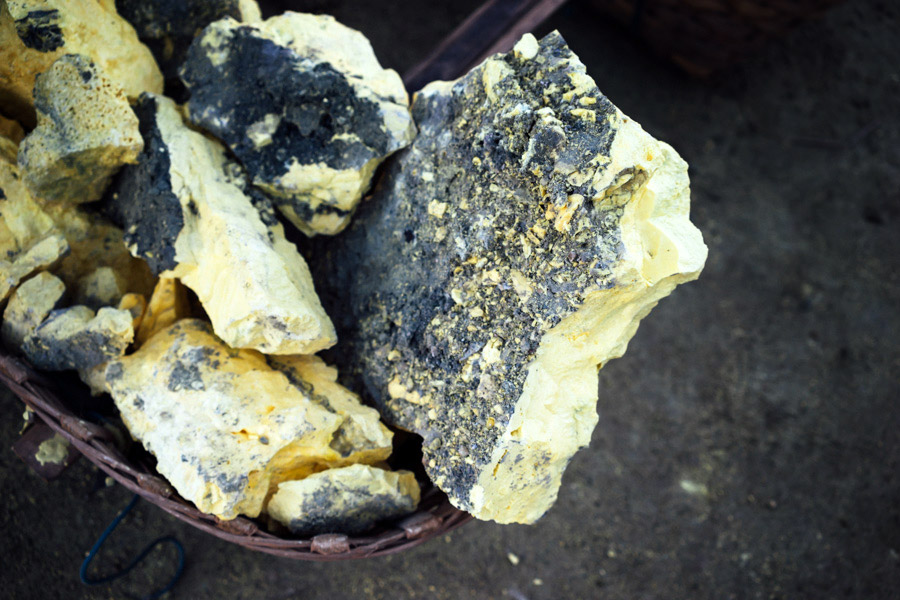
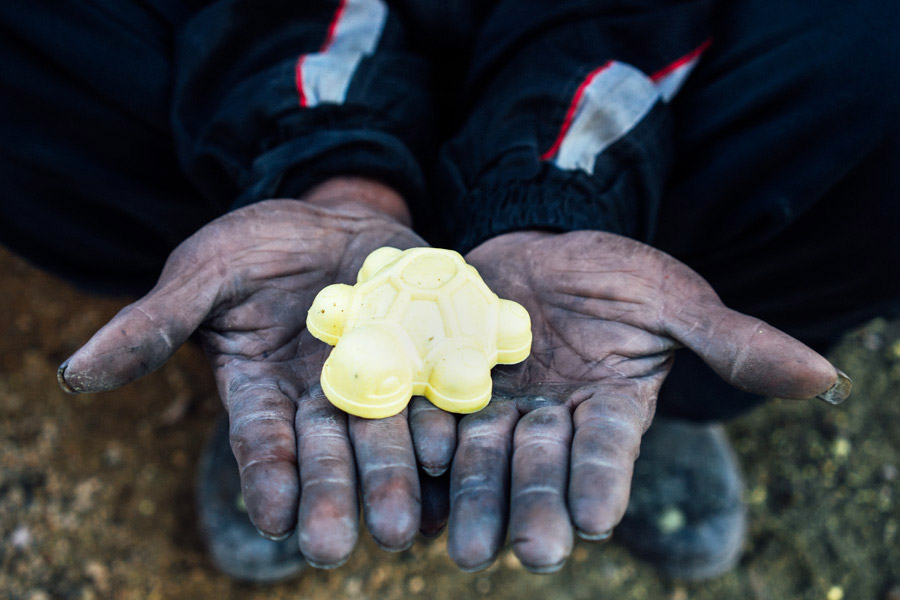
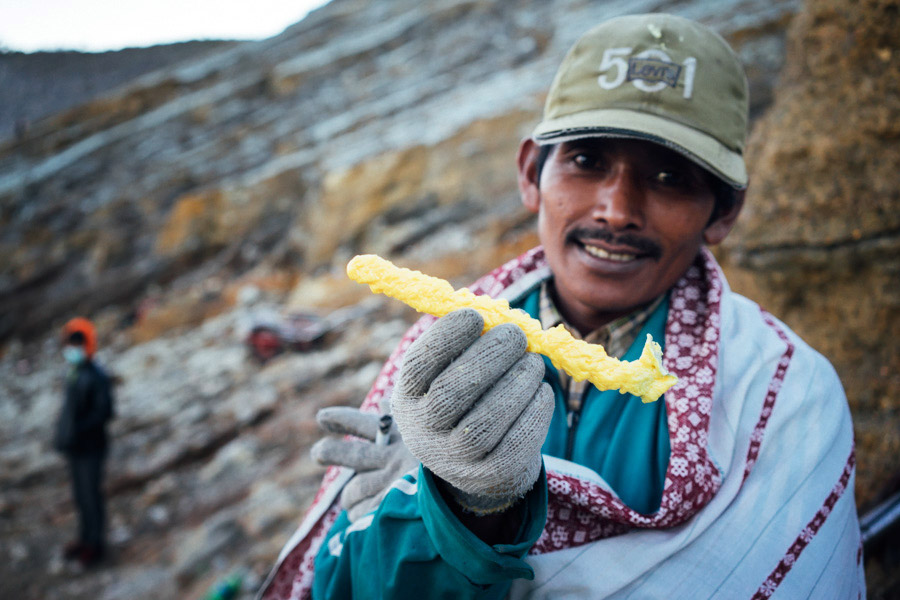
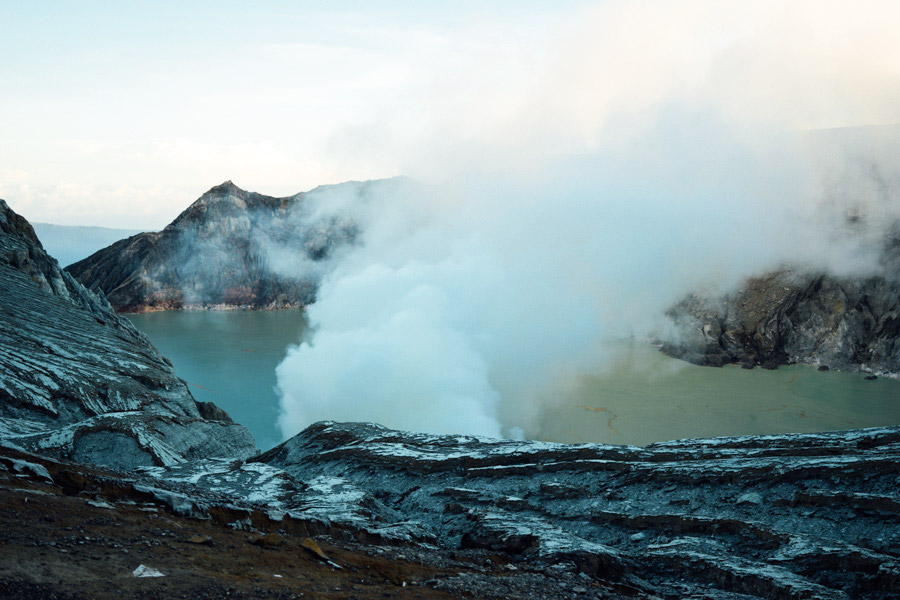
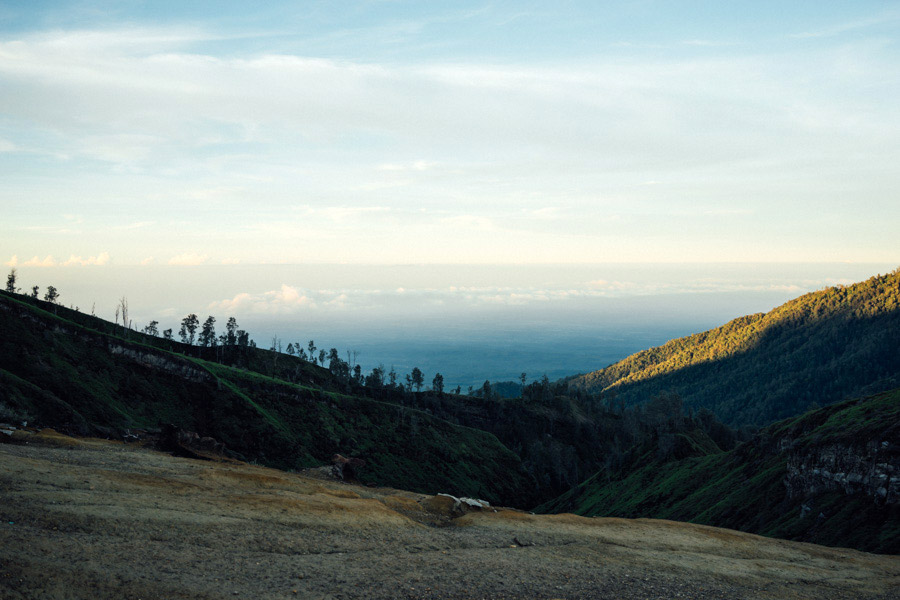
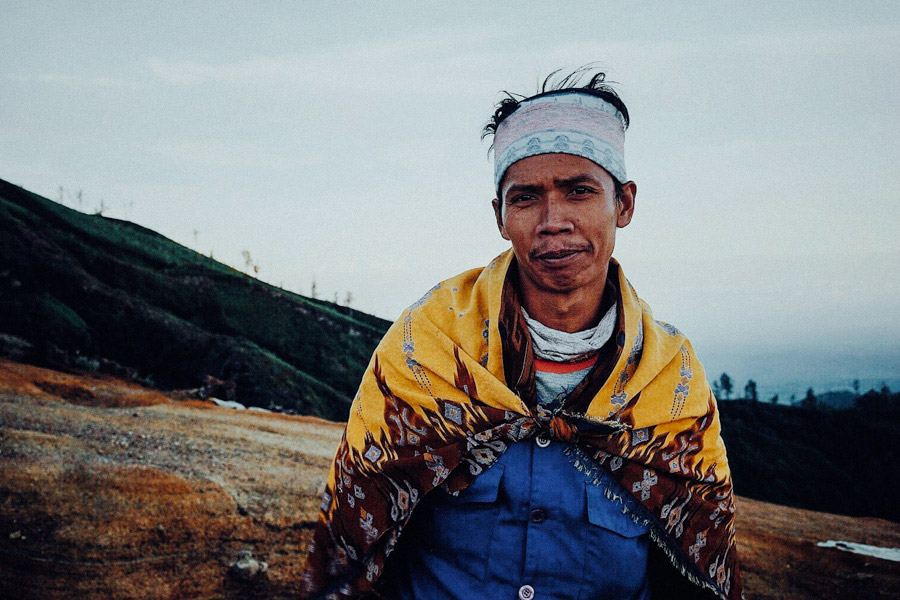

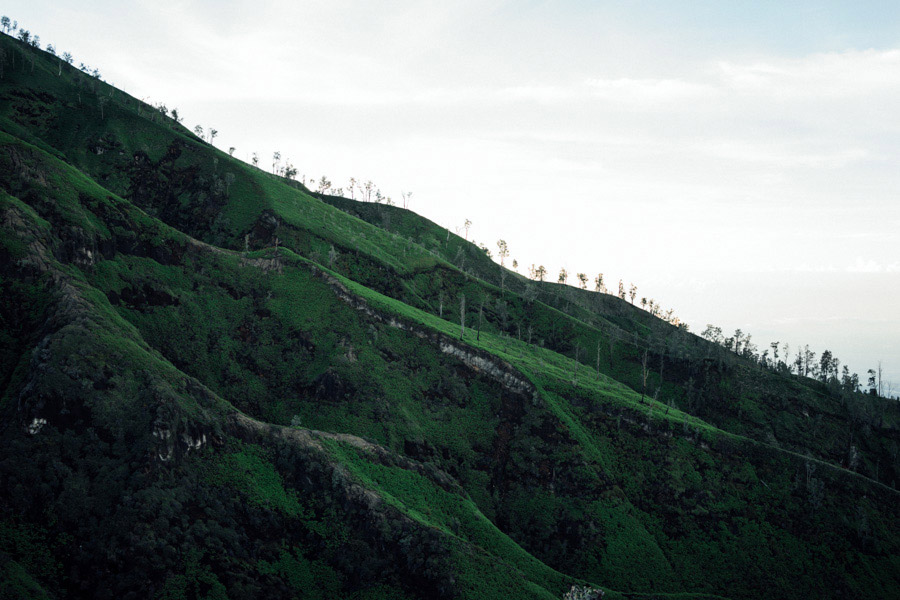
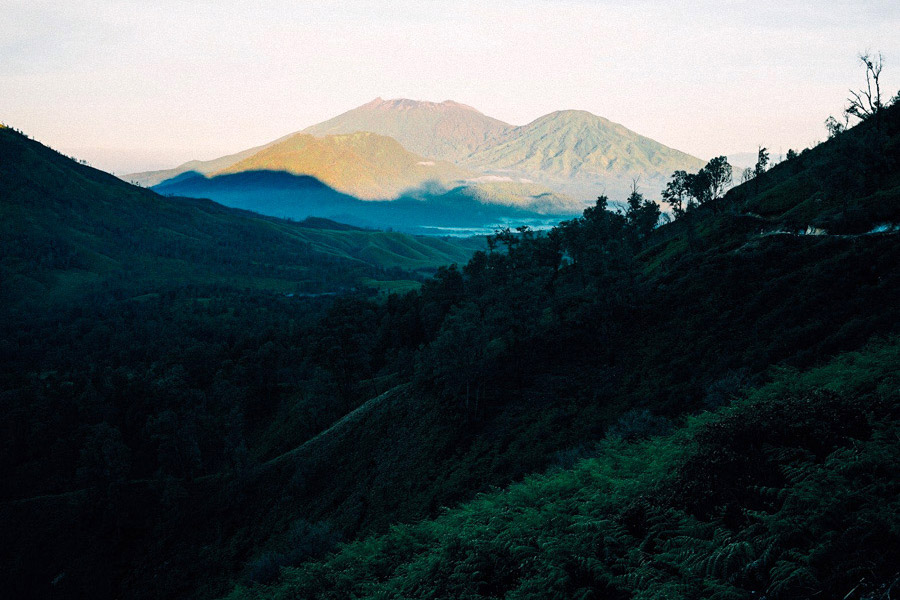

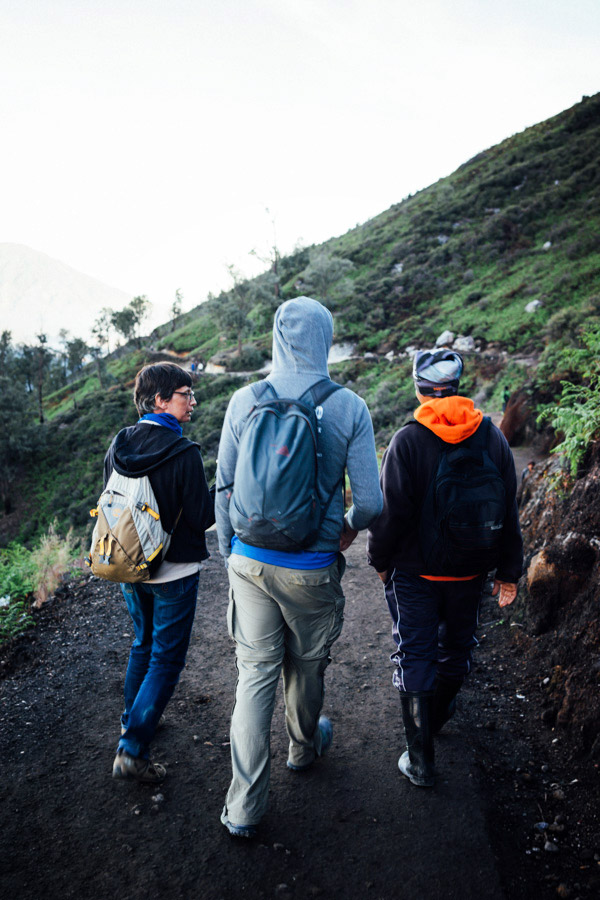
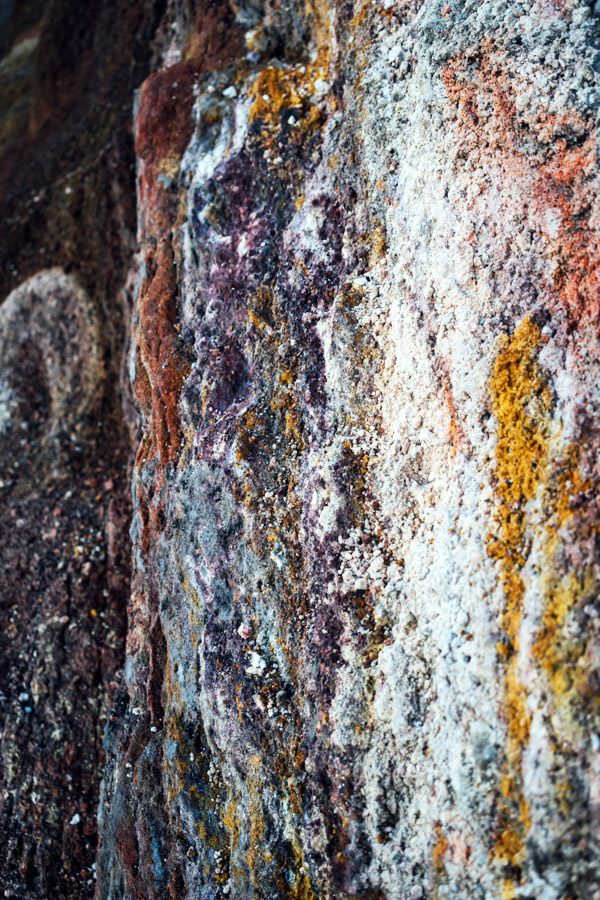
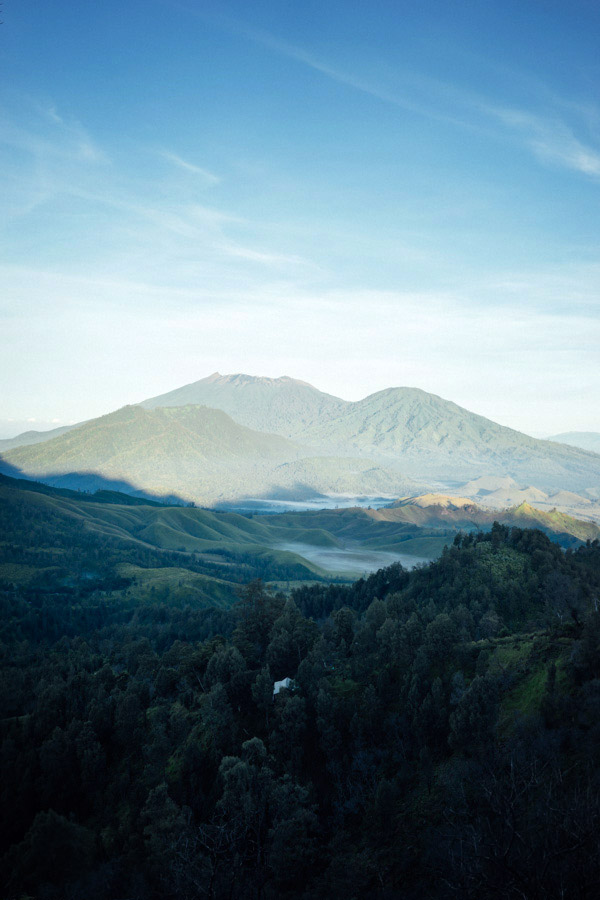
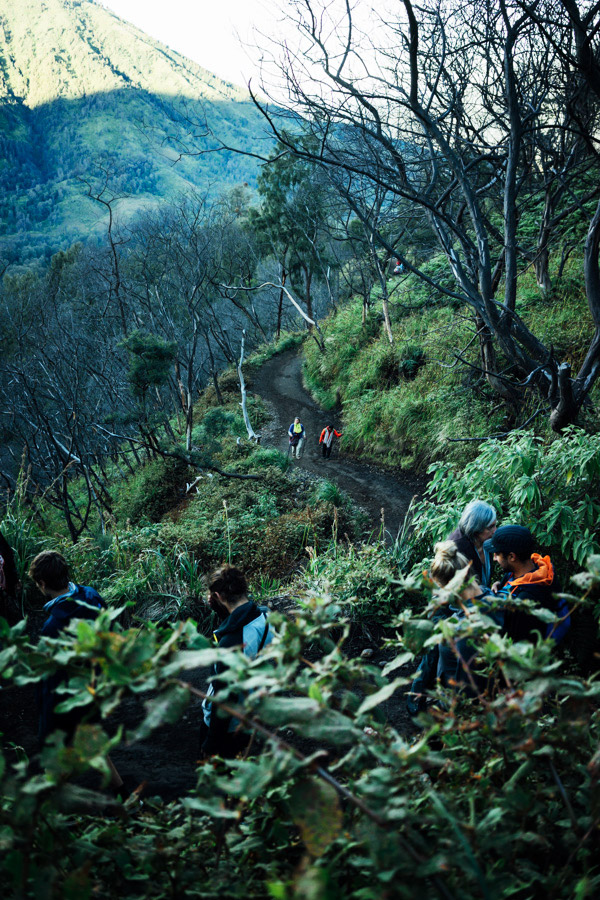
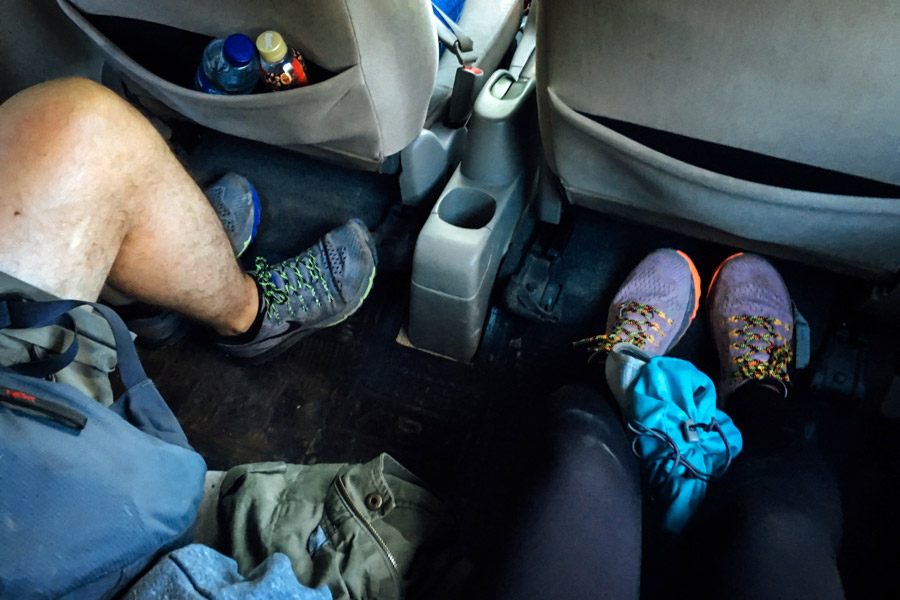
Links & Tips
- Kawah Ijen - The awesome volcano of this post. Read more about the blue flames on NatGeo.
- Should you be wary of the terrible gasses during the hike? Maybe so. We were quite lucky that the wind never really pushed the cloud our way. That said, a lot of the reading online is quite dramatic. After the fact, this was the best resource we found online.
- Banyuwangi is a 6-hour bus + ferry ride from Bali. We took a bus from the Mengwi station, but the trip can also be started at the Ubung bus terminal. It cost us Rp 130.000 each - but we know now that we overpaid. Make sure never to buy bus tickets from the ticket station, which known to inflate prices. Hop on the bus and negotiate with the driver. The trip can also be arranged with an agency directly from Bali, but will take a full 24 hours if done in one shot (see link above). Better to stop over in Banyuwangi at least for one night.
- If you do stop in Banyuwangi, make sure to check out our friend and owner of Pepito Guest House. Great rooms, free breakfast, good wifi, and cheap restaurants all around.
- Where to find the best Martabak in town? We just walk around and look for the deep frying pan. There is no ‘bad’ Martabak.















